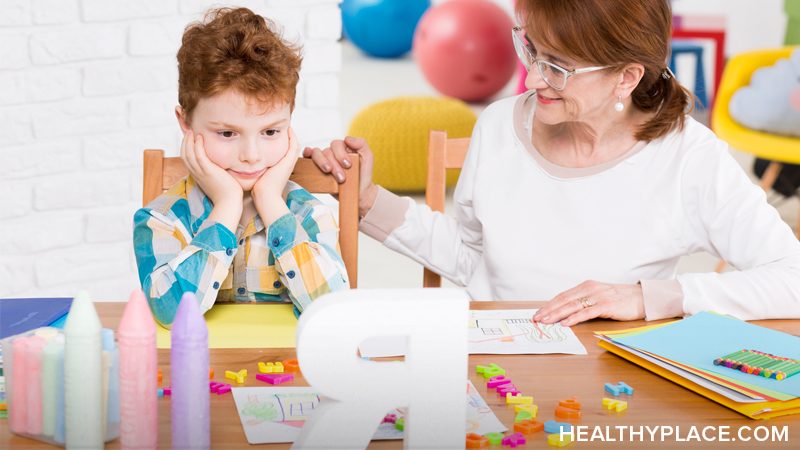What Kinds of Therapy for an ADHD Child Exist? Do They Work?

Therapy for an ADHD child can offer many benefits to help them thrive despite having this disruptive disorder. Attention-deficit/hyperactivity disorder is a disorder of executive functioning in the brain. Executive functions include focusing, paying attention, maintaining effort needed to complete a task, and working memory. ADHD can also involve behavior problems like hyperactivity, difficulty with transitions, and seemingly purposeful disobedience. A child with ADHD can be exasperating ("I Need to Know How to Discipline My Child with ADHD. Now."). Thankfully, therapy for an ADHD child can help.
Various kinds of therapy are available for children with ADHD. Common approaches include:
- Play therapy
- Behavioral therapy
- Parent training
- Cognitive-behavioral therapy
- Social skills group therapy
Each of these offers a different approach to helping kids with ADHD. In general, each of the therapies for ADHD children works as well as the others. When it comes to your child, though, they aren’t equally effective. To be effective for your child, therapy must meet their specific needs, struggles, and personality.
As you read the descriptions of each type of therapy, consider how your child might respond to it. All are researched-approved. The next step is to make sure that you and your child approve and respond.
Types of Therapy for an ADHD Child
Every therapy for children with ADHD has similar goals: to help these kids improve both behavior and executive functions so they can thrive in the classroom, on the playground, and at home with family. Here’s how each one approaches the task.
Play therapy works with the ADHD child’s need to move and their difficulty focusing and listening attentively. Rather than involving talk therapy, play therapy for ADHD lets kids play freely or with gentle direction from the therapist. The therapist observes and comments on the emotion or other complex concepts the child demonstrates through play. This helps kids develop insights into themselves and words to describe them.
Play therapy activities for ADHD include fantasy play, role play, games, blocks, sand tray, puppets, and other activities that a child gravitates toward. Play comes naturally to most children, so it reaches kids on their level and lets them act out roles and situations, practice life skills like taking turns and handling frustrations. Play therapy activities for ADHD increase attention to detail and the ability to concentrate, improve self-control and patience, and decrease impulsivity. Together, these new skills increase self-esteem, improve classroom success, help kids build friendships, and improve life at home.
Behavioral therapy uses rewards and consequences to help kids change their behavior. In behavioral therapy, an ADHD child learns to manage hyperactivity, impulsivity, and inattention, the core symptoms of the disorder. Kids also develop strategies for organization. This system of positive reinforcements and consequences decreases disruptive behaviors as well.
Behavioral therapy is effective in changing a child’s behaviors. It isn’t a quick fix, however. It requires hard work and patience.
Parent training is a program that teaches behavioral therapy to parents. A child’s parents or other caregivers use behavioral therapy to decrease problematic behavior like tantrums, defiance, tuning out instructions or directions, and other behaviors that get kids with ADHD into trouble wherever they go.
A clinical psychologist or other professional trains parents to use behavioral therapy to help their child. With the system of rewards and consistent consequences, kids fit in better with peers, improve listening skills, concentration, self-control, and self-esteem. Parent training can also strengthen the parent-child relationship.
Cognitive behavioral therapy, or CBT, is an approach that works very well with adults living with ADHD. It can be effective with kids, depending on the child. CBT is a form of talk therapy that helps people with ADHD talk about their experiences, identify negative thoughts about their experiences, and replace the negative thoughts with more realistic, helpful ones.
The nature of ADHD can make CBT frustrating for some children. Others, though, learn new thinking patterns and skills when they work with a CBT therapist.
Social skills group therapy can be part of any type of therapy for an ADHD child. These groups are led by one or two therapists and help children learn and practice new social behaviors with each other.
Do Therapies for an ADHD Child Work?
When working with a therapist they like and engage in the type of therapy that meets their individual needs, children with ADHD can improve in many ways. They change their behaviors and improve executive functioning. They can thrive, as can their families and teachers.
It’s important to know, though, that therapy isn’t a cure. Therapy, regardless of the type, doesn’t “fix” the brain or eliminate ADHD. Therapy for an ADHD child helps them make their lives with the disorder better.
See Also:
APA Reference
Peterson, T.
(2022, January 17). What Kinds of Therapy for an ADHD Child Exist? Do They Work?, HealthyPlace. Retrieved
on 2026, January 21 from https://www.healthyplace.com/parenting/adhd/what-kinds-of-therapy-for-an-adhd-child-exist-do-they-work



